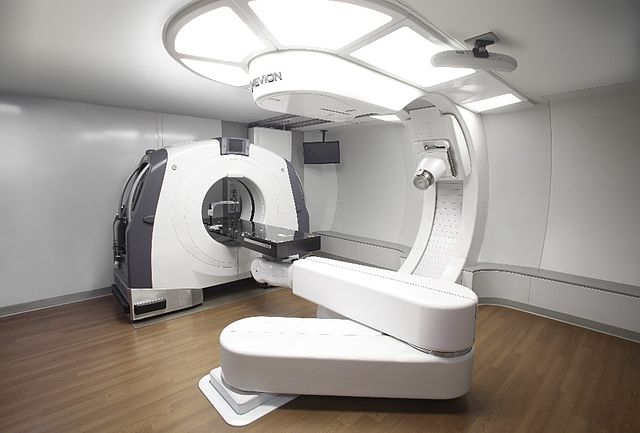EPJ D Highlight - Optimising proton beam therapy with mathematical models
- Details
- Published on 02 April 2019

New model improves our understanding of energy transfer in radiotherapy treatment plans by replacing 50-year-old parameters with more complex ones
Particle beam therapy is increasingly being used to treat many types of cancer. It consists in subjecting tumours to beams of high-energy charged particles such as protons. Although more targeted than conventional radiotherapy using X-rays, this approach still damages surrounding normal tissue. To design the optimum treatment plan for each patient, it is essential to know the energy of the beam and its effect on tumour and normal tissue alike. In a recent study published in EPJ D, a group of researchers led by Ramin Abolfath at the University of Texas MD Anderson Cancer Center, Houston, Texas, USA, put forward a new mathematical model outlining the effects of these beam therapies on patients' tissues, based on new, more complex, parameters. Using these new models, clinicians should be able to predict the effect of proton beams on normal and tumour tissue more precisely, allowing them to prepare more effective treatment plans.
The therapeutic and toxic effects of a proton beam can both be described using a combination of two effects: first, the biological effect of the radiation; and second, the amount of energy the beam transfers to tissue per unit length travelled, referred to as linear energy transfer (LET).
For over half a century, clinicians have been basing treatment plans on standard radiobiological models. These involved just two parameters: alpha, which is proportional to LET; and beta, which is independent of LET.
In this new approach, the authors modelled the processes through which energy transfer from ionising radiation produces potentially lethal DNA damage on a microscopic scale. They then coupled it to models of the birth and death of cells in millimetre-scale colonies.
Abolfath and colleagues fitted their model to data on the response of lung cancer cells to therapeutic doses of proton beam irradiation, and found that the standard radiobiological models applied most poorly when the beam energy was low. They then used these findings to generate new models in which alpha and beta were replaced by more complex formulae, which are able to explain some observed anomalies in cell survival.
R. Abolfath, Y. Helo, L. Bronk, A. Carabe, D. Grosshans and R. Mohan (2019) Renormalization of radiobiological response functions by energy loss fluctuations and complexities in chromosome aberration induction: deactivation theory for proton therapy from cells to tumor control, European Physical Journal D 73: 64, DOI: 10.1140/epjd/e2019-90263-5





